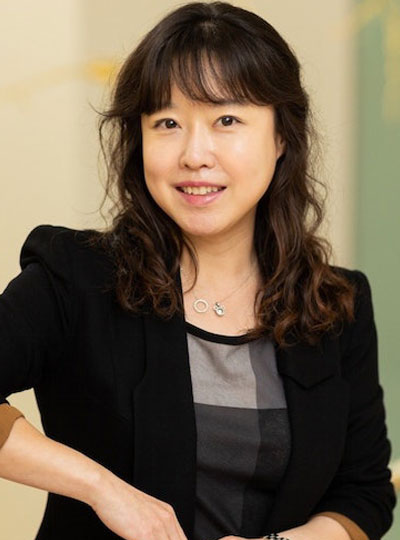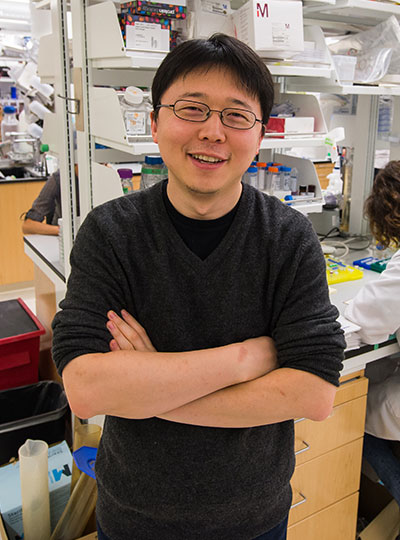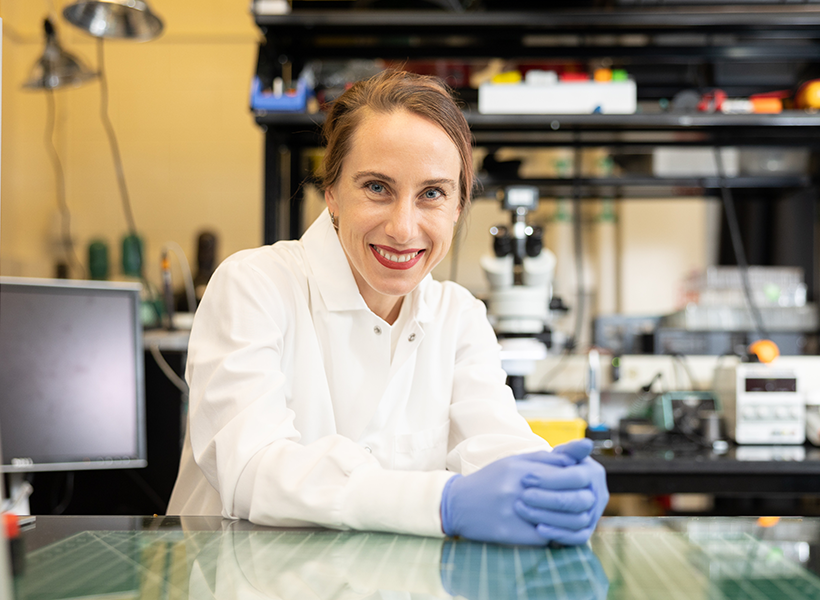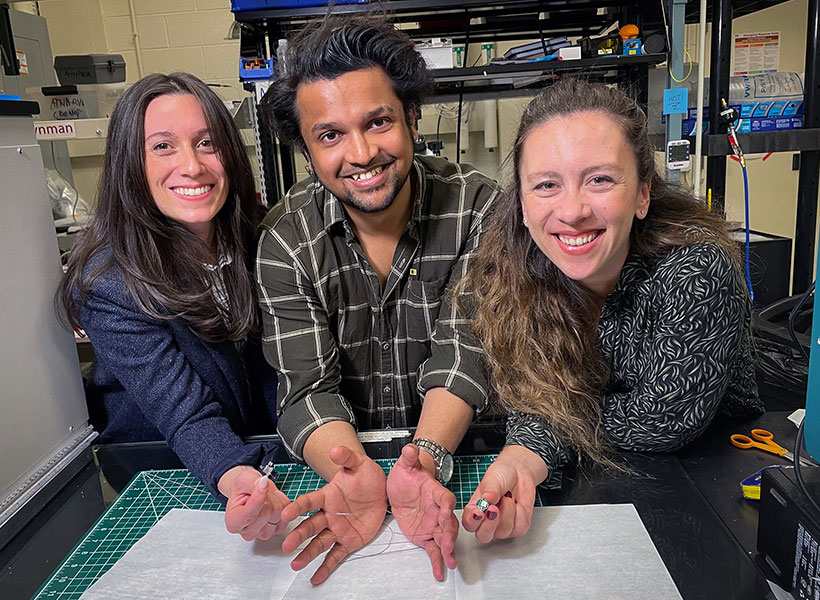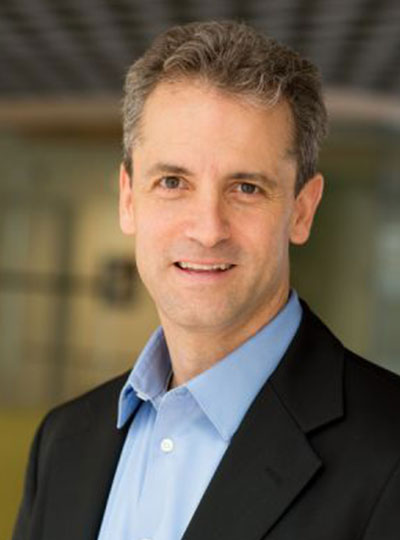In 2022, nine MIT faculty were granted tenure in the School of Science:
Gloria Choi examines the interaction of the immune system with the brain and the effects of that interaction on neurodevelopment, behavior, and mood. She also studies how social behaviors are regulated according to sensory stimuli, context, internal state, and physiological status, and how these factors modulate neural circuit function via a combinatorial code of classic neuromodulators and immune-derived cytokines. Choi joined the Department of Brain and Cognitive Sciences after a postdoc at Columbia University. She received her bachelor’s degree from the University of California at Berkeley, and her PhD from Caltech. Choi is also an investigator in The Picower Institute for Learning and Memory.
Nikta Fakhri develops experimental tools and conceptual frameworks to uncover laws governing fluctuations, order, and self-organization in active systems. Such frameworks provide powerful insight into dynamics of nonequilibrium living systems across scales, from the emergence of thermodynamic arrow of time to spatiotemporal organization of signaling protein patterns and discovery of odd elasticity. Fakhri joined the Department of Physics in 2015 following a postdoc at University of Göttingen. She completed her undergraduate degree at Sharif University of Technology and her PhD at Rice University.
Geobiologist Greg Fournier uses a combination of molecular phylogeny insights and geologic records to study major events in planetary history, with the hope of furthering our understanding of the co-evolution of life and environment. Recently, his team developed a new technique to analyze multiple gene evolutionary histories and estimated that photosynthesis evolved between 3.4 and 2.9 billion years ago. Fournier joined the Department of Earth, Atmospheric and Planetary Sciences in 2014 after working as a postdoc at the University of Connecticut and as a NASA Postdoctoral Program Fellow in MIT’s Department of Civil and Environmental Engineering. He earned his BA from Dartmouth College in 2001 and his PhD in genetics and genomics from the University of Connecticut in 2009.
Daniel Harlow researches black holes and cosmology, viewed through the lens of quantum gravity and quantum field theory. His work generates new insights into quantum information, quantum field theory, and gravity. Harlow joined the Department of Physics in 2017 following postdocs at Princeton University and Harvard University. He obtained a BA in physics and mathematics from Columbia University in 2006 and a PhD in physics from Stanford University in 2012. He is also a researcher in the Center for Theoretical Physics.
A biophysicist, Gene-Wei Li studies how bacteria optimize the levels of proteins they produce at both mechanistic and systems levels. His lab focuses on design principles of transcription, translation, and RNA maturation. Li joined the Department of Biology in 2015 after completing a postdoc at the University of California at San Francisco. He earned an BS in physics from National Tsinghua University in 2004 and a PhD in physics from Harvard University in 2010.
Michael McDonald focuses on the evolution of galaxies and clusters of galaxies, and the role that environment plays in dictating this evolution. This research involves the discovery and study of the most distant assemblies of galaxies alongside analyses of the complex interplay between gas, galaxies, and black holes in the closest, most massive systems. McDonald joined the Department of Physics and the Kavli Institute for Astrophysics and Space Research in 2015 after three years as a Hubble Fellow, also at MIT. He obtained his BS and MS degrees in physics at Queen’s University, and his PhD in astronomy at the University of Maryland in College Park.
Gabriela Schlau-Cohen combines tools from chemistry, optics, biology, and microscopy to develop new approaches to probe dynamics. Her group focuses on dynamics in membrane proteins, particularly photosynthetic light-harvesting systems that are of interest for sustainable energy applications. Following a postdoc at Stanford University, Schlau-Cohen joined the Department of Chemistry faculty in 2015. She earned a bachelor’s degree in chemical physics from Brown University in 2003 followed by a PhD in chemistry at the University of California at Berkeley.
Phiala Shanahan’s research interests are focused around theoretical nuclear and particle physics. In particular, she works to understand the structure and interactions of hadrons and nuclei from the fundamental degrees of freedom encoded in the Standard Model of particle physics. After a postdoc at MIT and a joint position as an assistant professor at the College of William and Mary and senior staff scientist at the Thomas Jefferson National Accelerator Facility, Shanahan returned to the Department of Physics as faculty in 2018. She obtained her BS from the University of Adelaide in 2012 and her PhD, also from the University of Adelaide, in 2015.
Omer Yilmaz explores the impact of dietary interventions on stem cells, the immune system, and cancer within the intestine. By better understanding how intestinal stem cells adapt to diverse diets, his group hopes to identify and develop new strategies that prevent and reduce the growth of cancers involving the intestinal tract. Yilmaz joined the Department of Biology in 2014 and is now also a member of Koch Institute for Integrative Cancer Research. After receiving his BS from the University of Michigan in 1999 and his PhD and MD from University of Michigan Medical School in 2008, he was a resident in anatomic pathology at Massachusetts General Hospital and Harvard Medical School until 2013.
In 2023, five MIT faculty were granted tenure in the School of Science:
Physicist Riccardo Comin explores the novel phases of matter that can be found in electronic solids with strong interactions, also known as quantum materials. His group employs a combination of synthesis, scattering, and spectroscopy to obtain a comprehensive picture of these emergent phenomena, including superconductivity, (anti)ferromagnetism, spin-density-waves, charge order, ferroelectricity, and orbital order. Comin joined the Department of Physics in 2016 after postdoctoral work at the University of Toronto. He completed his undergraduate studies at the Universita’ degli Studi di Trieste in Italy, where he also obtained a MS in physics in 2009. Later, he pursued doctoral studies at the University of British Columbia, Canada, earning a PhD in 2013.
Netta Engelhardt researches the dynamics of black holes in quantum gravity and uses holography to study the interplay between gravity and quantum information. Her primary focus is on the black hole information paradox, that black holes seem to be destroying information that, according to quantum physics, cannot be destroyed. Engelhardt was a postdoc at Princeton University and a member of the Princeton Gravity Initiative prior to joining the Department of Physics in 2019. She received her BS in physics and mathematics from Brandeis University and her PhD in physics from the University of California at Santa Barbara. Engelhardt is a researcher in the Center for Theoretical Physics and the Black Hole Initiative at Harvard University.
Mark Harnett studies how the biophysical features of individual neurons endow neural circuits with the ability to process information and perform the complex computations that underlie behavior. As part of this work, his lab was the first to describe the physiological properties of human dendrites. He joined the Department of Brain and Cognitive Sciences and the McGovern Institute for Brain Research in 2015. Prior, he was a postdoc at the Howard Hughes Medical Institute’s Janelia Research Campus. He received his BA in biology from Reed College in Portland, Oregon and his PhD in neuroscience from the University of Texas at Austin.
Or Hen investigates quantum chromodynamic effects in the nuclear medium and the interplay between partonic and nucleonic degrees of freedom in nuclei. Specifically, Hen utilizes high-energy scattering of electron, neutrino, photon, proton and ion off atomic nuclei to study short-range correlations: temporal fluctuations of high-density, high-momentum, nucleon clusters in nuclei with important implications for nuclear, particle, atomic, and astrophysics. Hen was an MIT Pappalardo Fellow in the Department of Physics from 2015 to 2017 before joining the faculty in 2017. He received his undergraduate degree in physics and computer engineering from the Hebrew University and earned his PhD in experimental physics at Tel Aviv University.
Sebastian Lourido is interested in learning about the vulnerabilities of parasites in order to develop treatments for infectious diseases and expand our understanding of eukaryotic diversity. His lab studies many important human pathogens, including Toxoplasma gondii, to model features conserved throughout the phylum. Lourido was a Whitehead Fellow at the Whitehead Institute for Biomedical Research until 2017, when he joined the Department of Biology and became a Whitehead Member. He earned his BS from Tulane University in 2004 and his PhD from Washington University in St. Louis in 2012.


